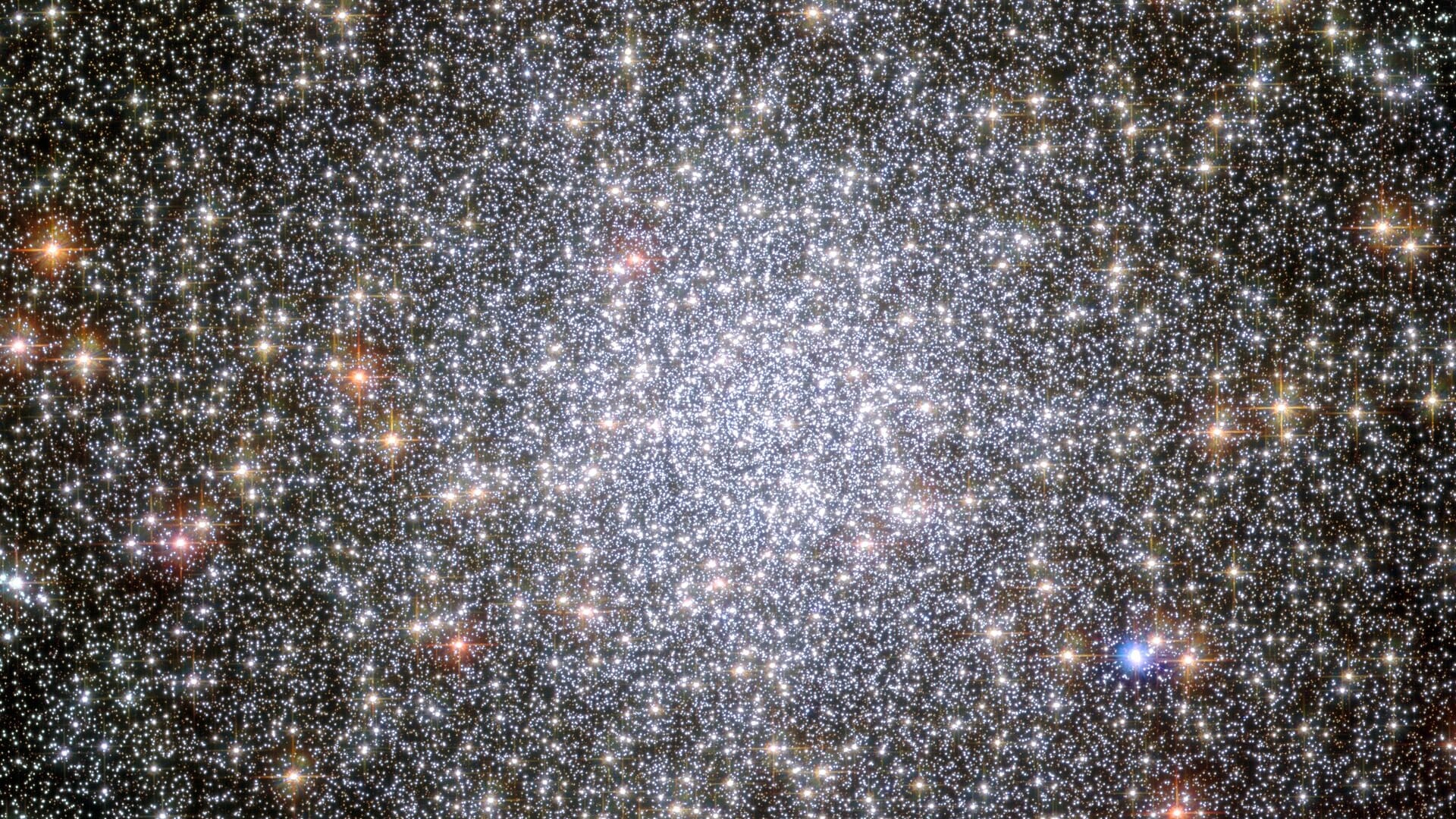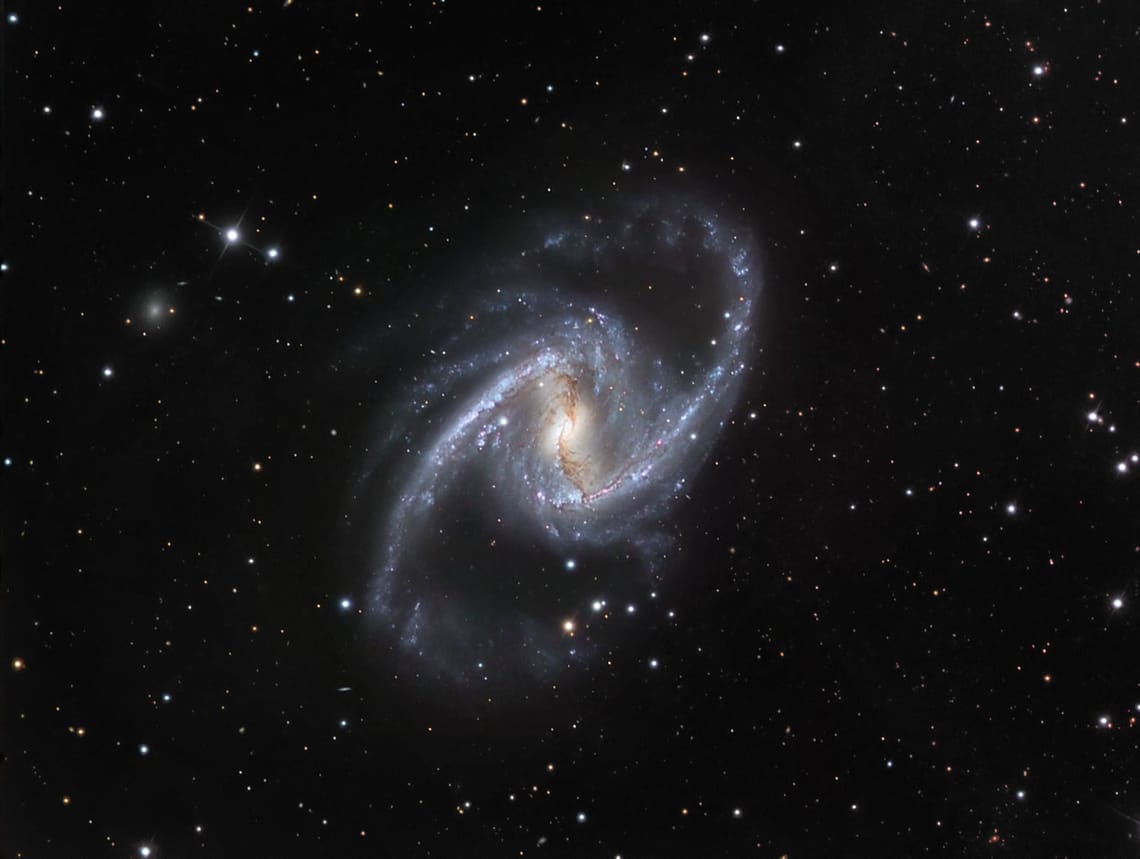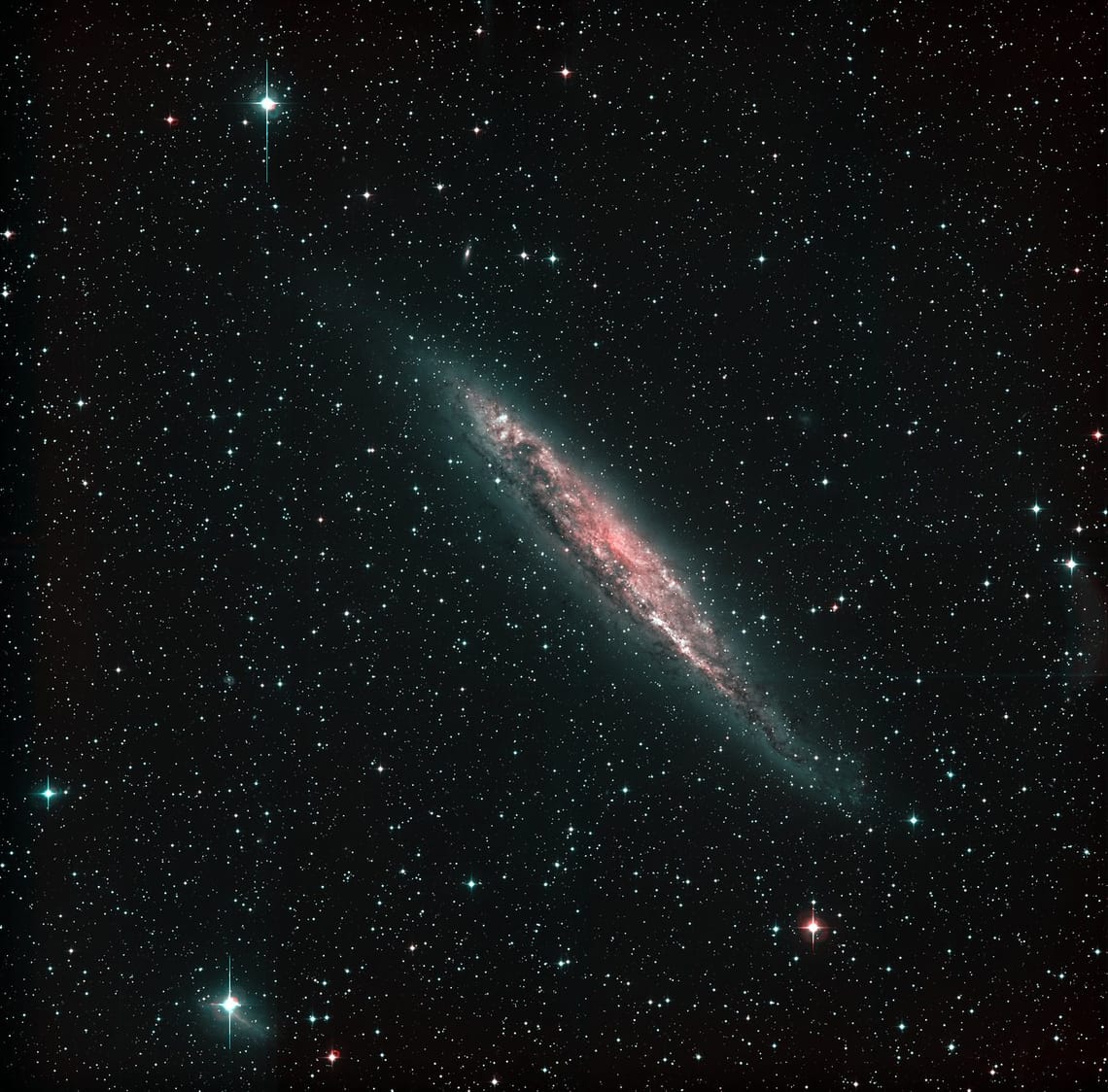Best Deep-Sky Objects By Month: November 2025
With several bright constellations rising, November offers excellent opportunities for observing deep-sky objects. Whether you’re using binoculars or a telescope, you’ll find something fascinating to explore on almost any clear night. In this article, we’ve gathered the most interesting deep-sky objects visible in November, from faint galaxies to bright star clusters. Our Sky Tonight will help you easily locate each of these objects in the sky. Just download the app, and let the astronomy adventure begin!
Contents
- Best November deep-sky objects visible to the naked eye
- Best November deep-sky objects to see with binoculars
- Best November deep-sky objects to see through a telescope
- Deep-sky objects in November: F.A.Q.
- How to observe deep-sky objects: useful tips
- Deep-sky objects in November: Bottom line
Best November deep-sky objects visible to the naked eye
No special equipment? No problem! Some of November’s brightest celestial wonders can be seen without any optical aid — from glowing star clusters to entire galaxies visible as soft patches of light in the dark sky.
47 Tucanae

- Alternative names: NGC 104, Caldwell 106
- Apparent size: 30′ (1 x Moon)
- Apparent magnitude: 4.0
- Constellation: Tucana
- Where to observe: Southern Hemisphere
- How to observe: Visible to the naked eye as a small bright patch near the Small Magellanic Cloud. Through binoculars, it becomes a compact, glowing sphere; telescopes reveal its dense, star-filled core.
- Description: 47 Tucanae is one of the brightest and largest globular clusters in the sky, located about 13,000 light-years away. It’s a favorite southern-sky object and is often featured in wide-field astrophotography of the SMC region.
Andromeda Galaxy

- Alternative names: M31, NGC 224
- Apparent size: 3° × 1° (6 x Moon)
- Apparent magnitude: 3.4
- Constellation: Andromeda
- Where to observe: Northern Hemisphere
- How to observe: When viewed with the naked eye, the Andromeda Galaxy resembles a small, elongated patch of light. For a more detailed view of its shape and luminous core, use 10x50 binoculars or a small telescope.
- Description: The Andromeda Galaxy is a spiral galaxy located about 2.5 million light-years from Earth. It is a member of the Local Group of galaxies and one of the most distant objects visible with the unaided eye.
Small Magellanic Cloud

- Alternative names: SMC, NGC 292
- Apparent size: 5° × 3° (10 x Moon)
- Apparent magnitude: 2.1
- Constellation: Tucana
- Where to observe: Southern Hemisphere
- How to observe: The Small Magellanic Cloud can be seen without any optical aid as a diffuse “fog” in the sky. It is best viewed on clear, moonless nights. Using 10x50 binoculars will allow you to see that the Small Magellanic Cloud consists of numerous stars and star clusters.
- Description: The Small Magellanic Cloud is a dwarf irregular galaxy positioned about 200,000 light-years away from us. It’s one of the nearest external galaxies and an easy naked-eye target from the Southern Hemisphere.
Pleiades

- Alternative names: M45, Seven Sisters
- Apparent size: 1°50' (3.7 x Moon)
- Apparent magnitude: 1.2
- Constellation: Taurus
- Where to observe: Both hemispheres
- How to observe: The Pleiades are easily visible to the naked eye: under dark skies, you can see at least six stars forming a recognizable “mini-dipper”. Binoculars or a telescope will provide a better view of the fainter stars and the nebulosity surrounding them.
- Description: The Pleiades are an open star cluster located about 444 light-years away. It is one of the nearest star clusters and the nearest Messier object to Earth.
Hyades

- Alternative names: Caldwell 41, Cr 50, Mel 25
- Apparent size: 5°30′ (11 x Moon)
- Apparent magnitude: 0.5
- Constellation: Taurus
- Where to observe: Both hemispheres
- How to observe: Though the Hyades star cluster is nominally brighter than the nearby Pleiades, it is very large and not as obvious to the naked eye. The cluster is best viewed through binoculars that have fields of view between 7° and 9° in diameter.
- Description: The Hyades is an open star cluster located only 150 light-years away from us. It is the nearest and one of the best-studied star clusters.
Best November deep-sky objects to see with binoculars
If you don’t have a telescope, binoculars are still enough to explore the night sky this month. Several bright clusters and nebulae are large and luminous enough to be easily spotted, even from suburban areas.
Dumbbell Nebula

- Alternative names: M27, NGC 6853, Apple Core Nebula
- Apparent size: 8.0′ × 5.6′ (0.3 x Moon)
- Apparent magnitude: 7.4
- Constellation: Vulpecula
- Where to observe: Northern Hemisphere
- How to observe: The Dumbbell Nebula is quite bright and suits well for amateur astronomical observations. Under a perfectly dark sky, you can spot it even with 10x50 or 15x70 binoculars. It’s still better to use a small telescope, though.
- Description: The Dumbbell Nebula is a planetary nebula located about 1,360 light-years away from Earth. It was observed by Charles Messier in 1764 and became the first object of this type to be discovered. The nebula is shaped as an irregular sphere with a brighter area that looks like a half-eaten apple. For this reason, it’s sometimes called the Apple Core Nebula.
NGC 362

- Alternative names: Caldwell 104
- Apparent size: 12′54″ (0.4 x Moon)
- Apparent magnitude: 6.5
- Constellation: Tucana
- Where to observe: Southern Hemisphere
- How to observe: You can observe NGC 362 with 8x40 or 10x50 binoculars — it will look like a slightly unfocused “star”. Under clear dark skies, you can even spot this cluster with the naked eye!
- Description: NGC 362 is a globular cluster located at about 30,000 light-years from Earth. It’s a relatively young globular cluster for the Milky Way (about 10–11 billion years old).
Triangulum Galaxy

- Alternative names: M33, NGC 598
- Apparent size: 1° × 41' (2 x Moon)
- Apparent magnitude: 5.7
- Constellation: Triangulum
- Where to observe: Northern Hemisphere
- How to observe: The Triangulum galaxy is one of the most distant objects that can be seen with the naked eye. However, you’ll need ideal observation conditions and really sharp eyes to spot it. It’s much easier to view the galaxy through binoculars or a small telescope.
- Description: The Triangulum Galaxy is a spiral galaxy located 2.7 million light-years from Earth. Its name derives not from the galaxy’s shape but from the constellation Triangulum, where it can be spotted. M33 is the third-largest member of the Local Group of galaxies, following the Andromeda Galaxy and our Milky Way.
Orion Nebula

- Alternative names: M42, NGC 1976, Great Orion Nebula
- Apparent size: 1°30' × 1° (3 x Moon)
- Apparent magnitude: 4.0
- Constellation: Orion
- Where to observe: Both hemispheres
- How to observe: To the naked eye, the Orion Nebula looks like a hazy “star”. Binoculars will allow you to see it as a large, hazy patch with two “wings” extending out sideways. Through a telescope, you’ll be able to see the four brightest stars in the nebula, known as the Trapezium cluster. The Orion Nebula is one of the most popular astrophotography targets.
- Description: The Orion Nebula is a diffuse nebula situated in the Milky Way, at a distance of 1,300 light-years away from us. It is the closest region of massive star formation to Earth.
Double Cluster

- Alternative names: NGC 869 and NGC 884, Caldwell 14
- Apparent size: 1° (2 x Moon)
- Apparent magnitude: 3.7
- Constellation: Perseus
- Where to observe: Northern Hemisphere
- How to observe: The Double Cluster is visible to the naked eye under reasonably dark suburban skies. If you use 10x50 binoculars, you will see that this object does consist of two separate clusters.
- Description: The Double Cluster comprises two open star clusters and is located approximately 7,500 light-years away from us. NGC 869 (h Persei) forms the western half of the Double Cluster, while NGC 884 (χ Persei) forms the eastern half.
Best November deep-sky objects to see through a telescope
November offers several galaxies and nebulae that reveal their true beauty only through a telescope. These objects may appear faint, but with a bit of patience and dark skies, you’ll see the intricate structures and distant worlds hidden far beyond our galaxy.
NGC 1365

- Alternative names: Great Barred Spiral Galaxy, UGC 5887
- Apparent size: 11′ × 6.2′ (0.35 x Moon)
- Apparent magnitude: 10.3
- Constellation: Fornax
- Where to observe: Southern Hemisphere
- How to observe: The galaxy is best observed through telescopes with an aperture of 200 mm (8”) or larger under dark skies. With smaller telescopes, you’ll see only its bright bar and central core.
- Description: NGC 1365 is a double-barred spiral galaxy located about 56 million light-years from Earth. It’s known for its prominent central bar and symmetrical spiral arms.
Silver Sliver Galaxy

- Alternative names: NGC 891, Caldwell 23, Outer Limits Galaxy
- Apparent size: 13.5′ × 2.5′ (0.45 x Moon)
- Apparent magnitude: 10.0
- Constellation: Andromeda
- Where to observe: Northern Hemisphere
- How to observe: The galaxy is not well visible through binoculars. We recommend using a telescope with an aperture of at least 100 mm (4”) and choosing a location away from light pollution.
- Description: NGC 891 is a spiral galaxy located about 30 million light-years away in the constellation Andromeda. It’s often considered part of the NGC 1023 group of galaxies, although its membership in the group hasn’t been firmly established. Seen almost perfectly edge-on from Earth, NGC 891 shows a dark dust lane cutting across its disk, making it look strikingly similar to how our Milky Way would appear from the outside.
NGC 4945

- Alternative names: Caldwell 83
- Apparent size: 20′ × 3.8′ (0.6 x Moon)
- Apparent magnitude: 9.3
- Constellation: Centaurus
- Where to observe: Southern Hemisphere
- How to observe: The NGC 4945 galaxy is best visible through medium and large telescopes. It appears as a bright, elongated streak of light.
- Description: NGC 4945 is a spiral galaxy located about 11 million light-years away. It’s one of the brightest galaxies in the Centaurus group and has a structure similar to the Milky Way, with active star-forming regions and a powerful galactic nucleus.
Phantom Galaxy

- Alternative names: M74, NGC 628
- Apparent size: 10.5′ × 9.5′ (0.3 x Moon)
- Apparent magnitude: 9.3
- Constellation: Pisces
- Where to observe: Both hemispheres
- How to observe: The Phantom Galaxy has a very low surface brightness, which makes it difficult to observe. It’s best to view it under a perfectly dark sky with at least a 200mm (8”) telescope. If you’re an astrophotographer with a DSLR camera and a telescope, you can capture beautiful images of this galaxy despite its low surface brightness.
- Description: The Phantom Galaxy is a large spiral galaxy located about 32 million light-years away from Earth. Due to its face-on orientation and well-defined spiral arms, it has become a popular target among professional astronomers who study the origin and structure of spiral galaxies.
Sculptor Galaxy

- Alternative names: NGC 253, Silver Coin, Silver Dollar Galaxy
- Apparent size: 27.5′ × 6.8′ (0.9 x Moon)
- Apparent magnitude: 8.0
- Constellation: Sculptor
- Where to observe: Southern Hemisphere
- How to observe: The Sculptor Galaxy can be viewed through 10x50 binoculars, appearing as a fuzzy elongated patch of light. To see its structure, use telescopes with a diameter of 300 mm (12”) or larger.
- Description: The Sculptor Galaxy is an intermediate spiral galaxy located about 11.4 million light-years away from Earth. It is positioned almost edge-on from our perspective on Earth, but its spiral structure can still be discerned.
Heart Nebula

- Alternative names: IC 1805, Sh2-190
- Apparent size: 2.5° x 2.5° (5 x Moon)
- Apparent magnitude: 6.5
- Constellation: Cassiopeia
- Where to observe: Northern Hemisphere
- How to observe: The Heart Nebula has a relatively low surface brightness, which makes it challenging to observe without a large-aperture telescope or the aid of long-exposure photography. Astrophotographers often capture it along with its companion, the Soul Nebula (IC 1848); together, they are referred to as the “Heart and Soul.”
- Description: The Heart Nebula is a large emission nebula located 7,500 light-years away from Earth. The nebula’s distinctive shape is created by stellar winds blowing from the hot stars in its center.
Deep-sky objects in November: F.A.Q.
What is a deep-sky object?
The term “deep-sky object” (DSO) is mostly used by amateur astronomers to denote astronomical objects outside the Solar System that are not individual stars. DSOs include galaxies, nebulae (emission, reflection, dark), supernova remnants, and star clusters (open and globular).
What is a galaxy?
A galaxy is a vast system of stars, gas, dust, and dark matter bound together by gravity. Galaxies come in many shapes and sizes — spiral, elliptical, or irregular. One of the most famous examples is the Andromeda Galaxy, our nearest large galactic neighbor, visible to the naked eye from the Northern Hemisphere. Our own Milky Way is also a spiral galaxy that contains hundreds of billions of stars, including the Sun.
What is a nebula?
A nebula is a giant cloud of gas and dust in space. Some nebulae, like the Orion Nebula, are regions where new stars are born, while others, like the Heart Nebula, are shaped by the powerful winds and radiation from young, massive stars. Depending on their composition and how they interact with starlight, nebulae can appear as emission, reflection, or dark types.
What is a star cluster?
A star cluster is a group of stars that formed from the same molecular cloud and remain bound by gravity. There are two main types: open clusters (like the Pleiades), which contain young stars loosely arranged, and globular clusters (like M92 or 47 Tucanae), which are densely packed and much older.
What do the letters NGC and M mean?
These letters come from astronomical catalogs — lists that help astronomers identify and organize objects in the night sky. M stands for the Messier Catalog, created by the French astronomer Charles Messier in the 18th century. It includes some of the most famous objects visible from the Northern Hemisphere, such as the Andromeda Galaxy (M31) and the Orion Nebula (M42). NGC means New General Catalogue, compiled later in the 19th century. It lists thousands of nebulae, galaxies, and star clusters — including NGC 362 and NGC 1365 mentioned above.
If you’d like to know more about how these catalogs were created and how astronomers use them today, check our article on the basic astronomical catalogs.
How to find deep-sky objects in the sky?
The most convenient way to quickly locate a deep-sky target in the sky is to use the Sky Tonight astronomy app. To find the object you’re interested in, tap the magnifier icon on the main screen, write the object’s name or catalog designation (for instance, “Pleiades” or “M45”) in the search field, and tap the blue target icon. The app will get you back to the main screen and show the object’s current position on the sky map. Point your device up and follow the white arrow to see where the object is in the sky above you. You can also activate the AR mode by tapping the big blue button at the bottom right corner of the screen.
How to observe deep-sky objects: useful tips
Here are some tips to improve your observing experience:
-
Plan your observing session beforehand. It’s good to pick a night when the sky will be dark for a long time. This is especially important for astrophotographers – the shooting process can take up to several hours. The “Sky” tab in the Sky Tonight’s calendar is helpful for planning (watch this video and learn all the features of the calendar).
-
Make a list of deep-sky objects that are visible from your location. Include details like their location, brightness, and the best time to observe them. Use star charts, astronomy books, online resources, and astronomical apps. With the help of Sky Tonight, you can get the list of objects you can observe from your location in a few seconds. Tap the telescope icon at the bottom of the screen to get to the Visible Tonight section. You can adjust the filter so that only deep-sky objects are displayed and then sort them by type, in alphabetical order, by date, or by magnitude.
-
To observe deep-sky objects, it's best to be in a location with minimal light pollution. The darker the sky, the more you will be able to see. Deep-sky objects are often faint and can take time to locate and observe. Be patient and allow your eyes to adjust to the darkness. Also, use averted vision – a special technique that is helpful while observing some faint targets.
-
Use a red flashlight while adjusting your equipment. This will help preserve your night vision.
-
Make sure to dress warmly and bring hot drinks: it can get cold at night, especially if you're standing still for long periods.
Deep-sky objects in November: Bottom line
November is a great time for observing some of the most famous and brightest star clusters – the Pleiades and Hyades. Along with the Double Cluster, Orion Nebula, and Andromeda Galaxy, they can be spotted with the naked eye, though optical devices will help you see more details. Use the Sky Tonight app to locate any of these objects in the night sky.
Best deep-sky targets by month: year-ahead calendar
Deep-sky wonders aren’t limited to November. Discover what the universe has to offer each month with our guides to deep-sky objects:
